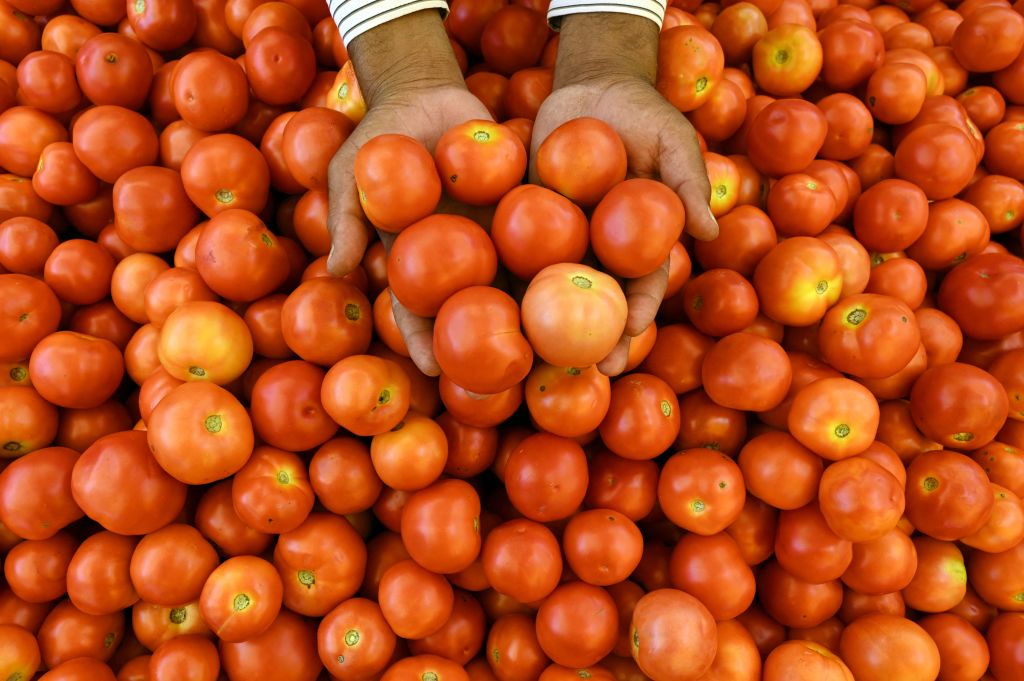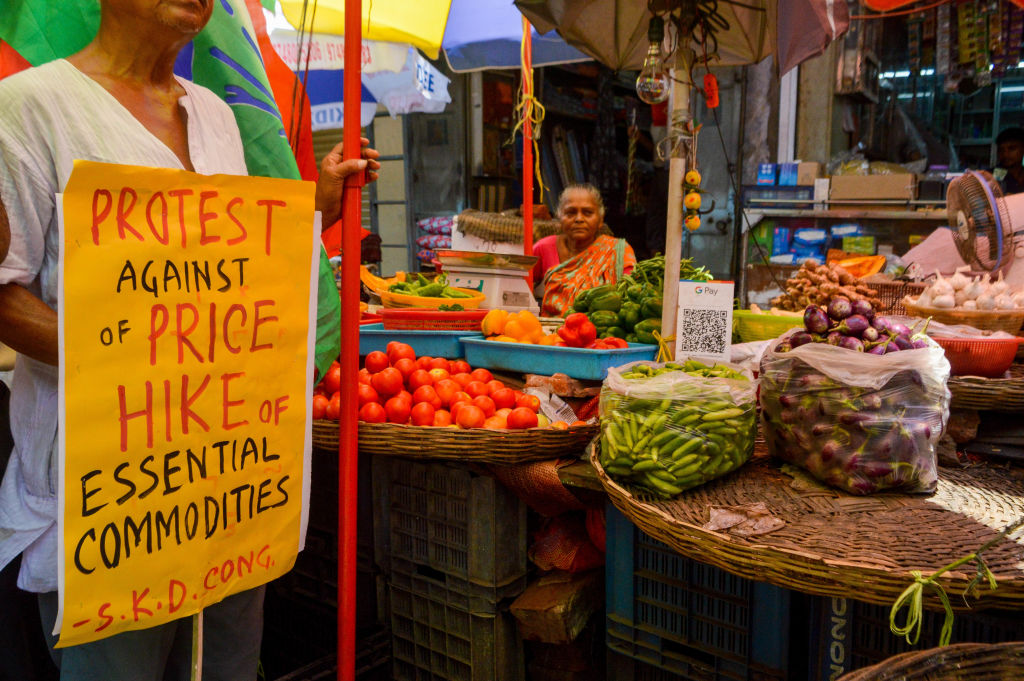
Earlier this month, news that McDonald’s had run out of tomatoes in New Delhi began circulating on Indian social media as images of an official notice plastered on restaurant windows quickly went viral. “Despite our best efforts, we are not able to get adequate quantities of tomatoes which pass our world-class stringent quality checks,” the notice stated. “Hence for the time being we are forced to serve you products without tomatoes.”
But the missing tomato slices from McDonald’s burgers might be one of the last things on ordinary Indians’ minds amid shortages and skyrocketing prices. The staple forms the base for curries, dhals, and cooked vegetables across India.
What's the current price and availability of tomatoes in India?
In recent months, the average price of tomatoes has surged by over 300%. The average cost per kilogram (2.2 lbs) of tomatoes was 107.18 rupees ($1.31) in July, up from 32.58 rupees ($0.40) in June, according to data from India’s Department of Consumer Affairs. The fruit now costs more than gas, which averaged 106.31 rupees ($1.29) per liter (0.26 gallons) over the same period.
At the same time, supplies have also shrunk. One tomato farmer in the state of Haryana told The Guardian that his tomato harvest this year was half of the usual 30,000 kilograms of tomatoes he sold every year.
The cost and availability of tomatoes is usually dictated by seasonal patterns, and food spikes are not uncommon in India as a result. The month of July is usually more expensive than other times of the year because it sits between harvests.
Still, the current prices are at record highs. On July 25, the price of 1 kilogram of tomatoes reached 203 rupees ($2.48), nearly three times more when compared with last year, when it cost 80 rupees ($0.98), data from the Department of Consumer Affairs shows. The price has declined somewhat in recent days.
What’s caused the tomato shortage?
Climate change is the main reason behind the shortage this year, according to climate experts, which farmers and traders say has disrupted supply and demand. Much of the country has experienced erratic weather patterns in the first six months of 2023, with heatwaves arriving early and lasting longer, and extreme rainfall damaging crops.
In major tomato-producing Indian states like Andhra Pradesh, Maharashtra, and Karnataka, flooding was the main cause behind the price surge, according to the country's National Institute of Biotic Stresses Management, a council dedicated to agricultural research.
In recent years, unpredictable weather has only exacerbated the situation for South Asian countries on the frontlines of climate change. In India, floods and droughts have displaced large numbers of people, while food security has taken an even bigger hit. A 2022 U.N. report noted that “climate-related risks to agriculture and food security in Asia will progressively escalate” with global warming, with India emerging as the region’s most vulnerable nation in terms of crop production.
What is the government’s response to the shortage?
The shortage has stumped the government, which on June 30 launched a “Tomato Grand Challenge Hackathon” in Delhi to crowdsource ideas on how to combat rising tomato prices. In mid-July, the Department of Consumer Affairs directed agricultural and consumer cooperatives to “immediately procure” tomatoes from mandis, or vegetable markets, from high-production states like Andhra Pradesh, Karnataka, and Maharashtra to redistribute to major cities including Delhi and Mumbai.

Last week, Ashwini Kumar Choubey, India's minister of state for consumer affairs, told the upper house of parliament that tomato prices are likely to come down with the arrival of new crops from Madhya Pradesh and Maharashtra, though he did not specify when.
But the plight over tomatoes for the world’s second-largest producer has also seen people turning to other alternatives. Households, already struggling with rising living costs in a country where GDP per capita sits around $200 per month, are cutting back on the ingredient and turning to cheaper alternatives like tomato purée.
In the northern state of Uttarakhand, the high prices have even prompted some to trek across the border to neighboring Nepal, where tomatoes can be found for almost half the price.
Have the shortages led to crime?
Besides the impact it has had on consumers and producers alike, the skyrocketing prices have also stoked turmoil. In Varanasi, a holy city in northern India, a local shopkeeper reportedly hired bouncers to prevent people from haggling over tomato prices, while a vegetable seller in the western city of Pune allegedly smacked a customer with a weighing scale.
Across the country, reports of people stealing from fields and hijacking tomato-laden trucks have made the news. One couple from the southern state of Tamil Nadu seized a truck transporting 2.75 tons of tomatoes after faking an accident, according to a report from the Press Trust of India.
More Must-Reads from TIME
- Cybersecurity Experts Are Sounding the Alarm on DOGE
- Meet the 2025 Women of the Year
- The Harsh Truth About Disability Inclusion
- Why Do More Young Adults Have Cancer?
- Colman Domingo Leads With Radical Love
- How to Get Better at Doing Things Alone
- Michelle Zauner Stares Down the Darkness
Write to Astha Rajvanshi at astha.rajvanshi@time.com